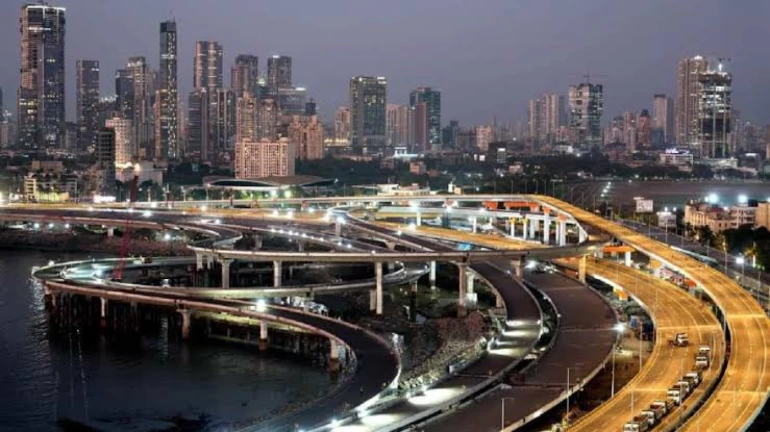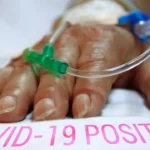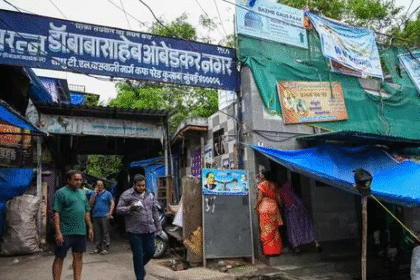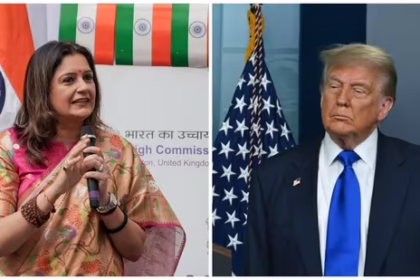Mumbai Coastal Road Project — Enhancing Safety with 236 CCTV Cameras
In a major stride toward urban surveillance and commuter safety, Mumbai’s ambitious Coastal Road project has been fortified with 236 high-definition CCTV cameras. The move comes as part of the Brihanmumbai Municipal Corporation’s (BMC) broader agenda to integrate smart infrastructure and ensure a safe, seamless commute along the 10.58-kilometre stretch of the southbound road.
Spanning from Marine Drive to Worli, the Mumbai Coastal Road is not just a transportation marvel but a lifeline meant to decongest the city’s traffic-prone zones. As the project edges closer to full operational status, authorities are now focusing on ensuring real-time monitoring, traffic regulation, and emergency responsiveness. The installation of these surveillance cameras is a decisive step in that direction.
Each of the 236 cameras is equipped with advanced features, including number plate recognition, real-time video streaming, and night vision capabilities. They are integrated into a centralized control room that monitors footage 24/7, thereby enabling authorities to track vehicular movement, detect unusual patterns, and respond quickly to any emergencies or accidents.
Safety isn’t the only benefit. The data captured by these cameras can help in future urban planning decisions, evaluate traffic flow efficiency, and contribute to law enforcement’s capability in case of criminal activity along the route. For commuters, this initiative brings peace of mind, knowing that help is only a few moments away if needed.
This move aligns with Mumbai’s vision to become a smarter, more secure city. Given the heavy investments and complex engineering involved in the Coastal Road project, safeguarding the infrastructure has become paramount. The cameras are expected to deter reckless driving, theft, and vandalism, thereby creating a disciplined environment for daily commuters.
Public response has been cautiously optimistic. Many citizens appreciate the emphasis on safety and technology, while some express concerns over privacy and the need for transparent data governance. The BMC has assured the public that all footage will be used strictly for official purposes, and data retention protocols are being established in accordance with legal standards.
The deployment of 236 CCTV cameras across the Mumbai Coastal Road marks a pivotal development in the city’s push toward smarter and safer urban mobility. While the headlines focus on numbers, the depth of planning, technological integration, and operational precision behind this surveillance initiative tells a more comprehensive story. In this segment, we explore the backbone of the system — the hardware, software, connectivity, and human oversight that enable this expansive digital eye to function effectively.
A Layered Security Approach
Rather than treating CCTV installation as a superficial deterrent, the Brihanmumbai Municipal Corporation (BMC) has designed a multi-tiered surveillance grid along the entire 10.58-kilometer stretch of the Coastal Road. The 236 cameras are not randomly distributed but strategically positioned at high-traffic junctures, underpasses, entry and exit points, and accident-prone zones. These include a mix of:
- Pan-Tilt-Zoom (PTZ) Cameras for broad sweeps and focused zooming
- ANPR (Automatic Number Plate Recognition) Cameras for real-time vehicle tracking
- Night Vision Infrared Cameras for round-the-clock monitoring
- Dome Cameras for 360-degree area surveillance in parking and tunnel sections
This layered architecture ensures redundancy in coverage and provides holistic visibility into traffic behavior, potential bottlenecks, and emergency situations.
Centralized Command Control
All 236 CCTV feeds are routed to a centralized Command and Control Center located in Worli, operational 24/7. Staffed by a blend of trained surveillance personnel, traffic officers, and IT technicians, this center functions as the digital nerve of the Coastal Road.
The facility features:
- High-resolution video walls for real-time visual monitoring
- AI-enabled analytics systems to detect suspicious activity, stalled vehicles, and potential accidents
- Instant data relay systems connected to Mumbai Traffic Police and Emergency Response Units
This seamless flow of information ensures that responses to on-ground incidents are no longer reactive but proactive and swift.
Integration with Citywide Surveillance Grid
What makes the Coastal Road project particularly future-ready is its integration into Mumbai’s broader Smart City vision. The 236 new CCTV cameras are not standalone — they are woven into the city’s existing network of over 6,000 public surveillance points.
This integrated grid enables a citywide tracking mechanism. For instance, if a vehicle violates speed limits or is involved in a hit-and-run on the Coastal Road, it can be tracked in real time as it moves through other parts of Mumbai. The synchronization of these feeds with vehicle databases, traffic histories, and law enforcement networks turns every frame of video into a potential crime-prevention tool.
Data Privacy and Retention
With every technological leap comes the need for responsibility. Civil liberties organizations have raised questions about privacy, especially with AI-enhanced facial recognition systems becoming more common. The BMC and Mumbai Police have responded by emphasizing their compliance with India’s data protection frameworks and international best practices.
Data from the Coastal Road CCTV network is:
- Stored securely for 30 to 60 days unless flagged for investigation
- Protected using encrypted servers and restricted access protocols
- Subject to audit by oversight authorities to prevent misuse
While there is no live facial recognition capability deployed yet, the system is future-ready to support it, pending legislative approval.
Maintaining the Hardware
Maintaining over 200 surveillance points in a saline, coastal environment presents logistical challenges. Corrosion, lens blurring due to humidity, and cable deterioration are among the major concerns.
To tackle these, BMC has partnered with private technology vendors for:
- Periodic hardware audits and recalibrations
- Real-time fault reporting via internal diagnostics
- Waterproof, tamper-proof camera casings specifically designed for marine zones
An annual maintenance contract (AMC) has been signed to ensure that all equipment remains functional, with response teams on standby in case of technical glitches.
The installation of 236 CCTV cameras along Mumbai’s newly constructed Coastal Road has garnered intense public attention—not just because of the infrastructure upgrade, but because it strikes at the intersection of safety, surveillance, and citizen experience. In this section, we examine how various sections of Mumbai’s society are responding to the project: commuters, local residents, digital rights activists, traffic experts, and the political class. Their responses reveal the complexity of balancing technological advancement with the lived reality of urban life.
Commuters: A Sense of Safety or Surveillance Fatigue?
For the lakhs of Mumbaikars who traverse the Coastal Road daily, the new surveillance grid evokes mixed emotions. On one hand, many express relief at the idea of constant monitoring—especially given the road’s recent history of minor accidents, rash driving incidents, and vehicular breakdowns.
Ravi Mehta, a regular commuter from Worli to Haji Ali, shares:
“It’s comforting to know that if anything happens, someone is watching. It’s not just about accidents; it’s also about road rage or medical emergencies.”
Women commuters in particular have welcomed the initiative. A recent online poll by a local Mumbai radio station showed that over 67% of women respondents said they felt “safer” with the presence of surveillance.
However, others express unease.
“Are we being protected or watched all the time?” asks Shalini D’souza, a digital media professional.
“There’s a fine line between surveillance for safety and surveillance for control. We need clarity on where the data goes, who uses it, and for how long.”
This sentiment—of being perpetually watched—is increasingly surfacing among Mumbai’s younger, privacy-conscious population.
Residents and Coastal Colonies: Good for Security, But What About Noise and Privacy?
Residential complexes lining the Coastal Road—from Marine Drive to Worli Sea Face—are not immune to the impact of the new digital infrastructure. For these residents, the cameras are a double-edged sword.
Security-wise, the benefits are tangible. There’s reduced loitering, better enforcement of no-parking zones, and a quicker response to unauthorized street vendors or construction encroachments.
But on the flip side, the residents are asking critical questions:
- Who monitors footage near private homes and balconies?
- Are cameras pointing into residential windows or private gardens?
- Will footage be shared with third parties, including advertisers or political offices?
In response, BMC has issued an assurance that “no residential or private areas are directly covered under the surveillance feeds.” Additionally, camera angles have been adjusted after a few local complaints.
Still, transparency remains key to public trust.
Digital Rights Advocates: Calling for Policy, Not Just Promises
India does not currently have a comprehensive data protection law in force, and this has triggered concern from digital rights organizations. Groups like the Internet Freedom Foundation (IFF) and the Software Freedom Law Center (SFLC) have called for:
- Clear articulation of data retention policies
- Independent third-party audits of surveillance footage
- Regular transparency reports on usage and access
- Formation of public grievance mechanisms
The lack of a legal framework raises red flags.
“It’s not about being anti-technology,” says a senior IFF representative.
“It’s about ensuring that technology deployed in public spaces doesn’t become an unchecked tool for profiling or abuse.”
Without safeguards, critics argue, the system could be weaponized—especially in politically volatile situations.
Traffic Experts and Urban Planners: A Welcome Step, But Not a Silver Bullet
Among urban planning professionals and traffic researchers, the Coastal Road surveillance grid is largely seen as a welcome move. Experts argue that CCTV coverage will help in data collection, traffic optimization, and real-time analytics.
Dr. Priyanka Desai, an urban mobility researcher with IIT-Bombay, notes:
“This is the direction all global smart cities are heading toward. Data from cameras can be used to design better road patterns, improve signal timing, and track traffic volume with greater accuracy.”
However, she cautions against over-reliance.
“Technology can’t substitute enforcement. If a motorist knows there are cameras but no penalties, behavior won’t change. The cameras must feed directly into a legal consequence system—like challan issuance, speed monitoring, and license tracking.”
Additionally, experts have raised questions about long-term funding, camera obsolescence, and the need for periodic upgrades.
The Political Lens: Claiming Credit and Managing Optics
Politically, the CCTV project has become a prized example of urban governance. Shiv Sena leaders have cited it as part of their smart city vision, while opposition leaders have pressed for more transparency around vendor selection, contract bidding, and long-term maintenance agreements.
Social media narratives often frame the initiative as a “showpiece” ahead of elections. Critics suggest that the visible nature of the cameras—well-advertised and strategically placed—may also serve a political function: projecting efficiency, safety, and modernity.
As Mumbai’s Coastal Road transforms into a modern, monitored artery of urban transit, its 236 CCTV cameras become more than just pieces of hardware. They become symbols of a new civic contract—one where security, efficiency, and surveillance intersect.
Whether this contract is seen as empowering or overreaching depends on how the system is governed, how accountable it is to the public, and how clearly it respects the boundaries between safety and privacy.
With 236 high-resolution CCTV cameras now operational along the Mumbai Coastal Road, law enforcement has gained access to an unprecedented, real-time visual database of one of the city’s busiest transport corridors. While citizens and urban planners view these cameras as a tool of deterrence and data, for the Mumbai Police and allied enforcement agencies, they represent a leap in policing capabilities, traffic management, and crime prevention.
In this part, we explore how the surveillance network is being used, the success stories it has already delivered, the operational protocols behind it, and the technological backend that powers it.
A New Eye on the City: Real-Time Monitoring in Action
The camera network feeds into a centralized Traffic Control Room and City Surveillance Hub, jointly operated by the Mumbai Traffic Police and the Brihanmumbai Municipal Corporation (BMC). These centers are staffed 24×7 and manned by trained personnel operating in shifts. The cameras are not static; many are equipped with pan-tilt-zoom (PTZ) capabilities, allowing for dynamic monitoring of multiple lanes, chokepoints, and sensitive zones.
A senior police officer, speaking under anonymity, explains:
“These cameras allow us to spot lane violations, speeding, illegal U-turns, stalled vehicles, and even pedestrians entering prohibited zones. We can zoom in, identify number plates, and dispatch traffic marshals or ambulances in real time.”
Early Wins: Success Cases Since Activation
Despite being in operation for just a short time, the system has already shown its impact:
- Accident Response: In one instance, a two-wheeler skidded near the Worli interchange late at night. Within 3 minutes, control room staff dispatched a rescue team after identifying the location via CCTV.
- Traffic Diversion: During a sudden waterlogging incident after pre-monsoon showers, the cameras enabled quick rerouting of vehicles before congestion escalated.
- Road Rage Incident: A dispute between two motorists that escalated into violence near Haji Ali was caught on camera. Visual evidence helped police identify the aggressor and initiate legal proceedings.
Such incidents reflect the proactive, rather than reactive, role the CCTV network is beginning to play.
Challans and Automated Enforcement: The Next Frontier
The Mumbai Traffic Police is now working on integrating Automated Number Plate Recognition (ANPR) systems into the Coastal Road cameras. This would allow for:
- Issuing e-challans for speeding, red-light jumping, or wrong-lane driving.
- Linking violations directly to vehicle owners via the RTO database.
- Maintaining digital violation records for habitual offenders.
Inspector Arvind Patil from the Western Suburban Zone confirms:
“Once ANPR is fully operational, violators won’t need to be stopped manually. The system will record, process, and generate e-challans instantly—backed by visual proof.”
This approach has already seen success on the Eastern Freeway and Bandra-Worli Sea Link. The Coastal Road is next in line for full automation.
Policing, Privacy, and Oversight
Despite the effectiveness of the surveillance grid, questions of data privacy and oversight persist. Currently, the Mumbai Police operates under the Maharashtra Police Act, which allows for certain surveillance in public interest. However, activists have raised the need for:
- Judicial or third-party oversight on footage access.
- Audit trails of who accesses video recordings and for what purpose.
- Limited footage retention periods, ideally no longer than 30–90 days unless required for investigation.
The police maintain that all footage is stored on secure servers with encryption and access logs. But in the absence of a statewide or national Data Protection Law, public trust hinges on internal assurances rather than enforceable rights.
Coordination with Emergency Services
One of the lesser-known advantages of the CCTV grid is its utility during emergencies:
- Ambulance Routing: Emergency services can now check live camera feeds to choose the fastest, least congested routes.
- Disaster Response: In case of flooding, chemical leaks, or coastal accidents, the cameras offer first responders a clear, real-time view of the situation.
- Missing Person Alerts: Police can circulate alerts internally and use visual pattern recognition to trace individuals—although this raises ethical considerations.
The Disaster Management Cell of the BMC has also been given partial access to the camera system for real-time response coordination.
Integration with Facial Recognition: A Cautious Approach
Although there are reports that some of the cameras are compatible with Facial Recognition Software (FRS), senior officials insist that no such system has been activated on the Coastal Road as of now.
ACP Meera Shah notes:
“Facial recognition is a powerful but controversial tool. Right now, our focus is traffic enforcement and safety. Any move towards FRS would need legal and policy-level guidance.”
This cautious tone reflects both public skepticism and the larger national debate around the use of facial recognition in public spaces without legislative safeguards.
Capacity Building and Training
Mumbai Police has partnered with private IT companies and academic institutions to train personnel in:
- Camera calibration and control
- Footage analysis and incident detection
- Ethical surveillance practices
- Data handling and cybersecurity protocols
This investment in human capital is critical, given the system’s growing sophistication.
The 236 CCTV cameras along the Mumbai Coastal Road are fast becoming more than surveillance tools—they’re evolving into a multi-purpose infrastructure for law enforcement, public safety, and civic administration. While the successes are notable, the system’s true test lies ahead: in scaling operations without compromising ethics, in balancing security with privacy, and in sustaining public trust.
Also Read : Maharashtra Reports 9 Fresh COVID-19 Cases Including 5 from Mumbai, Active Case Tally Reaches 31








